A project in collaboration with MOTOCICLISMO
Motociclismo: “Motociclismo magazine “Let’s not lose sight of each other” with the photometric tests in CevLab
Being clearly visible for motorcyclists means increasing their safety. Helmets, jackets and gilets with fluorescent colours, reflective inserts and new hi-tech fabrics are the revolution of recent years. In Cevlab photometric laboratory we tried on over 20 garments. Here are the results!
In our laboratory in Lainate (MI) we carried out tests on jackets, helmets and vests, reproducing the most dangerous situations (risk at the intersection and risk of rear-end collision) both at night and at dawn/dusk. We placed a tester-mannequin sitting on a motorbike and than we reviewed 4 types of jacket (black, light, fluorescent yellow and with Night Eye technology) and 3 types of helmet (black, white and fluorescent yellow), as well as 14 vests and 3 helmet models.
We carried out a 360° comparison on the 14 vests, examining brightness/reflection as well as quality, finish and practicality of use. For jackets, helmets and other products, we have checked only the visibility characteristics, testing them in the photometric laboratory. For the jackets we examined 3 different colors: black, light black and fluorescent yellow. We also requested a jacket equipped with the innovative Night Eye technology which, surprisingly, failed in laboratory tests.
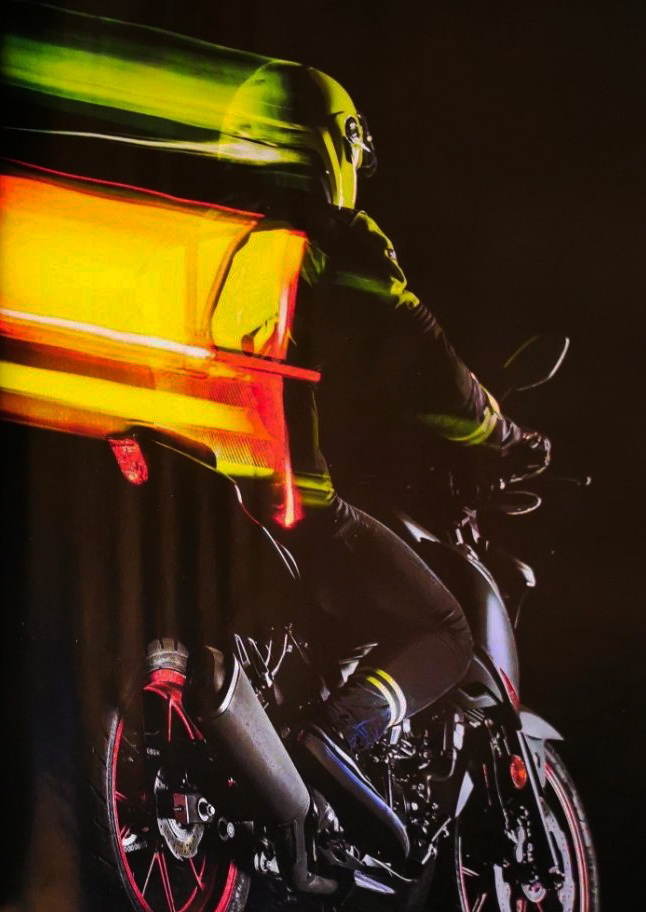
TESTS CARRIED OUT IN THE PHOTOMETRIC LABORATORY
TEST 1: VISIBILITY AT DAWN
This test measures luminance, i.e. how much light an object hit by a beam of light returns in low light conditions, such as at dawn or dusk. It was carried out by the optical engineer Selene Carrara. The beam is produced by an 80 lux lantern placed 15 m away, and all the measurements were taken under the same conditions: lantern distance and illuminance, divergence and distance of the photocells. The cd/m2 value, i.e. the luminous intensity expressed in candelas (cd) emitted in the direction of the observer from a given surface (m2) determines the result.
TEST 2: NIGHT “REFLECTION”.
The retroreflectors, this is the exact name of the visible reflective bands of eight when they are hit by a light, must reflect the artificial ray (car lights, street lamps, etc.) that strikes in the same direction from which it comes and nowhere else, with a maximum tolerance of 1° 30′, so as not to annoy other road users. Under the same conditions as test 1, the candles reflected for a given surface were measured in relation to the Lux emitted by the lantern: cd/(lux*m2).
TEST 3: FLUO CLOTH QUANTITY
To detect the distance at which an object is visible, the data obtained in tests 1 and 2 are fundamental, but not sufficient. A further evaluation is needed, i.e. the measurement of the quantity of “fluorescent” fabric present on the garment in question and its type: the CevLab technicians explained to us that a perforated garment, albeit microscopically, loses a small part of its luminance, and even more the so-called 3D fabrics.
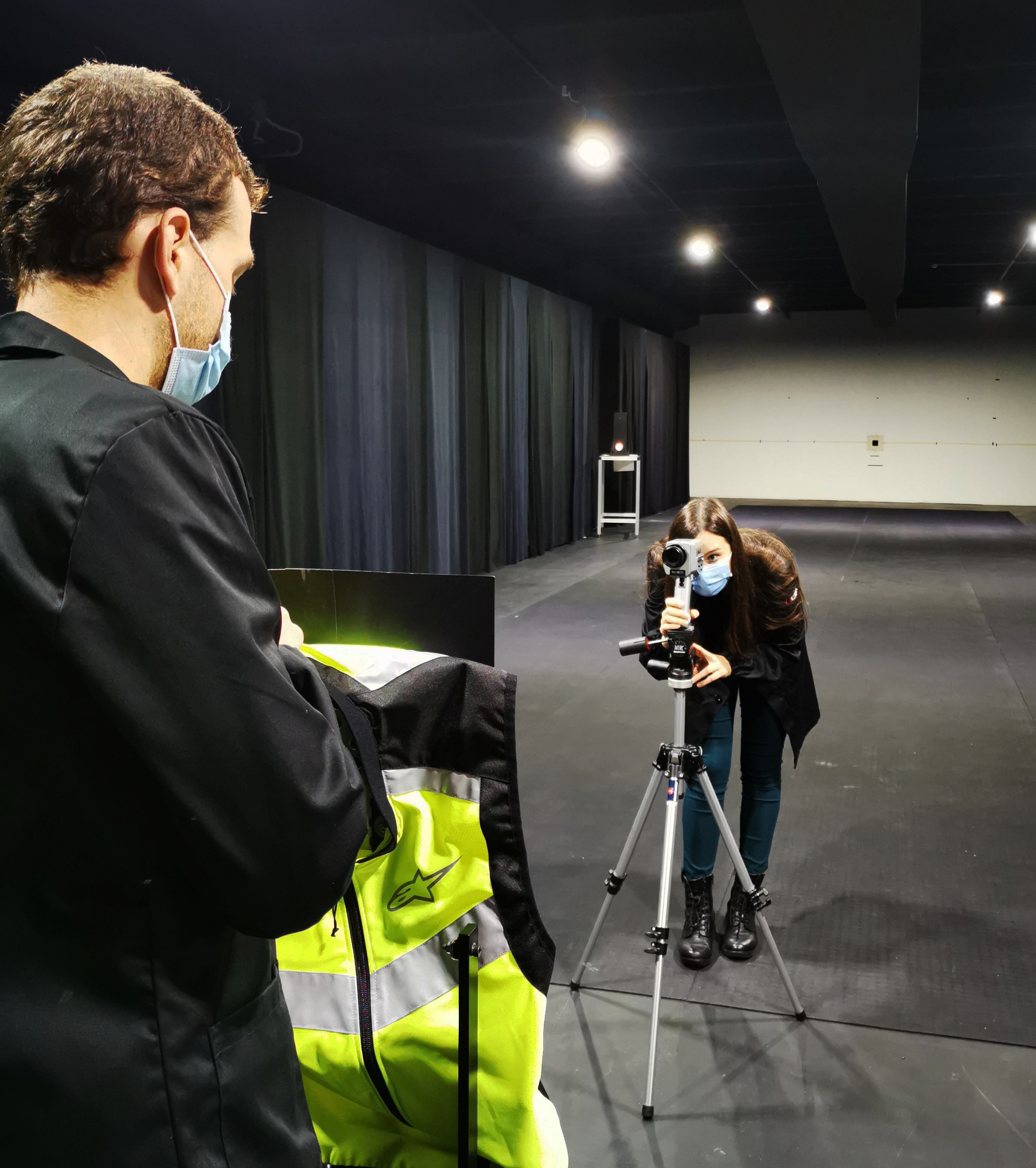
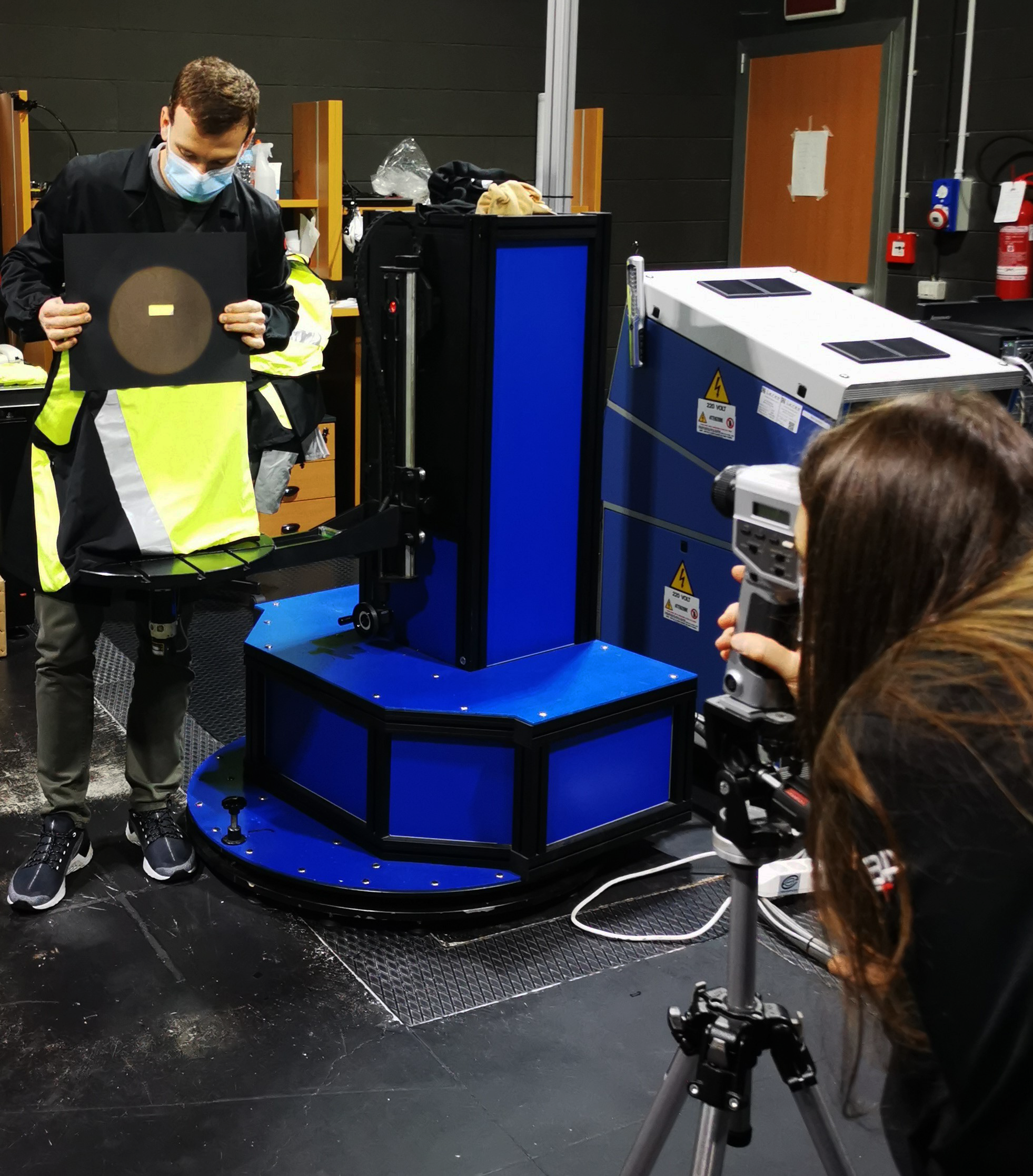
L’OUTFIT NELLE DIVERSE CONDIZIONI DI LUCE E PERICOLO
Meglio chiaro o giallo fluo?
We reproduced the two most dangerous situations with a rider on a Suzuki GSX-S125: risk of rear-end collision (seen from behind) and danger at an intersection (side view).
In the view from behind the light jacket at dawn-dusk was visible at a distance of 100 meters. The one with fluo inserts at 75 metres, while the black one at 50 was no longer distinguishable.
Laterally, clear and fluorescent can be seen from 75 meters, while again the black can only be glimpsed up to 50 meters.
Therefore, under certain circumstances, fluorescent is less effective than light colours. This is explained by the fact that size also matters: the light jacket is entirely light, while the yellow has only a fluorescent surface equal to about a third of the total. Reverse speech for helmets, which being monochromatic have the same colored surface. The yellow one is visible up to 200 meters, the white one up to 200 meters and the black one is lost again around 50 meters.
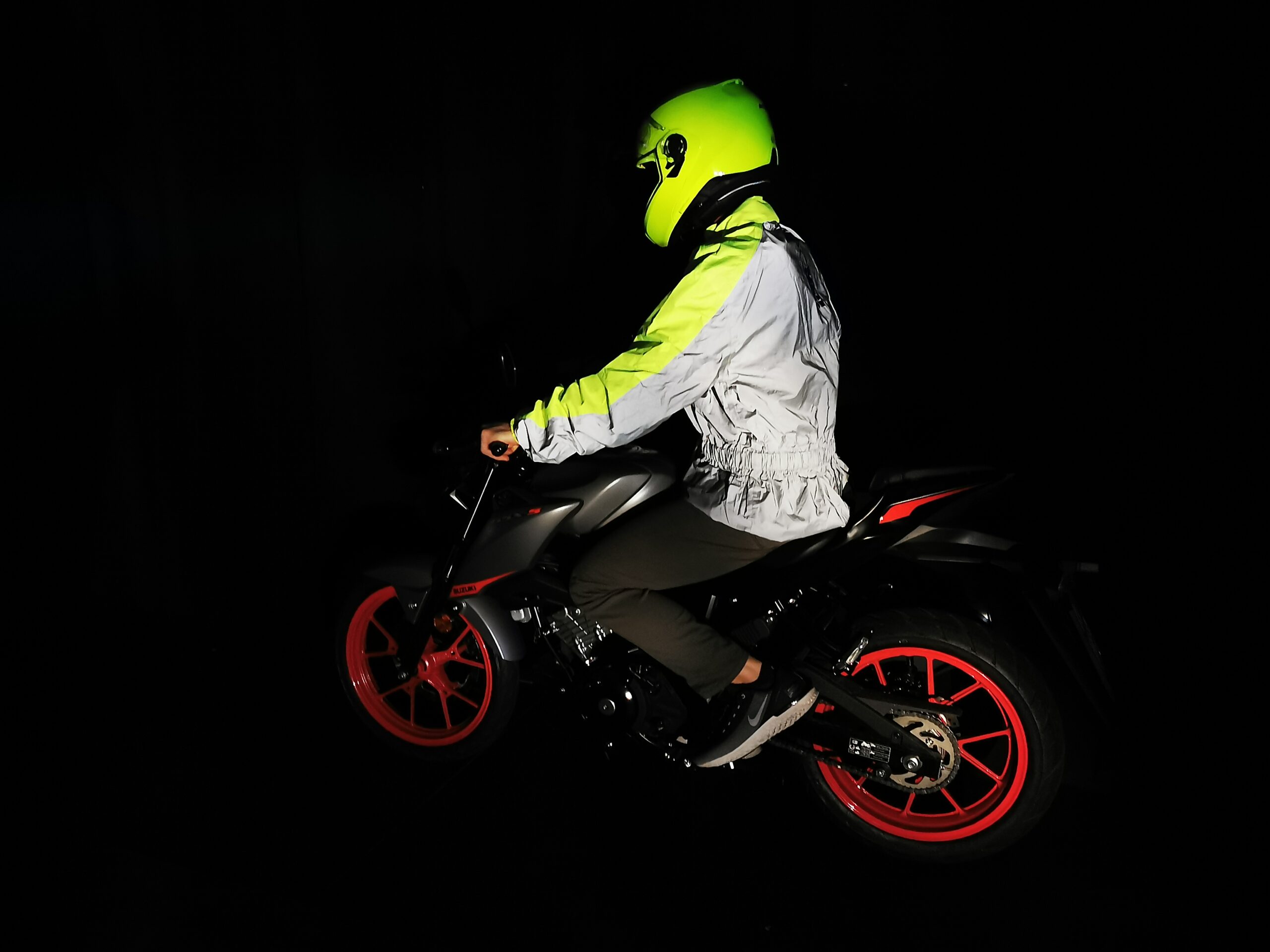
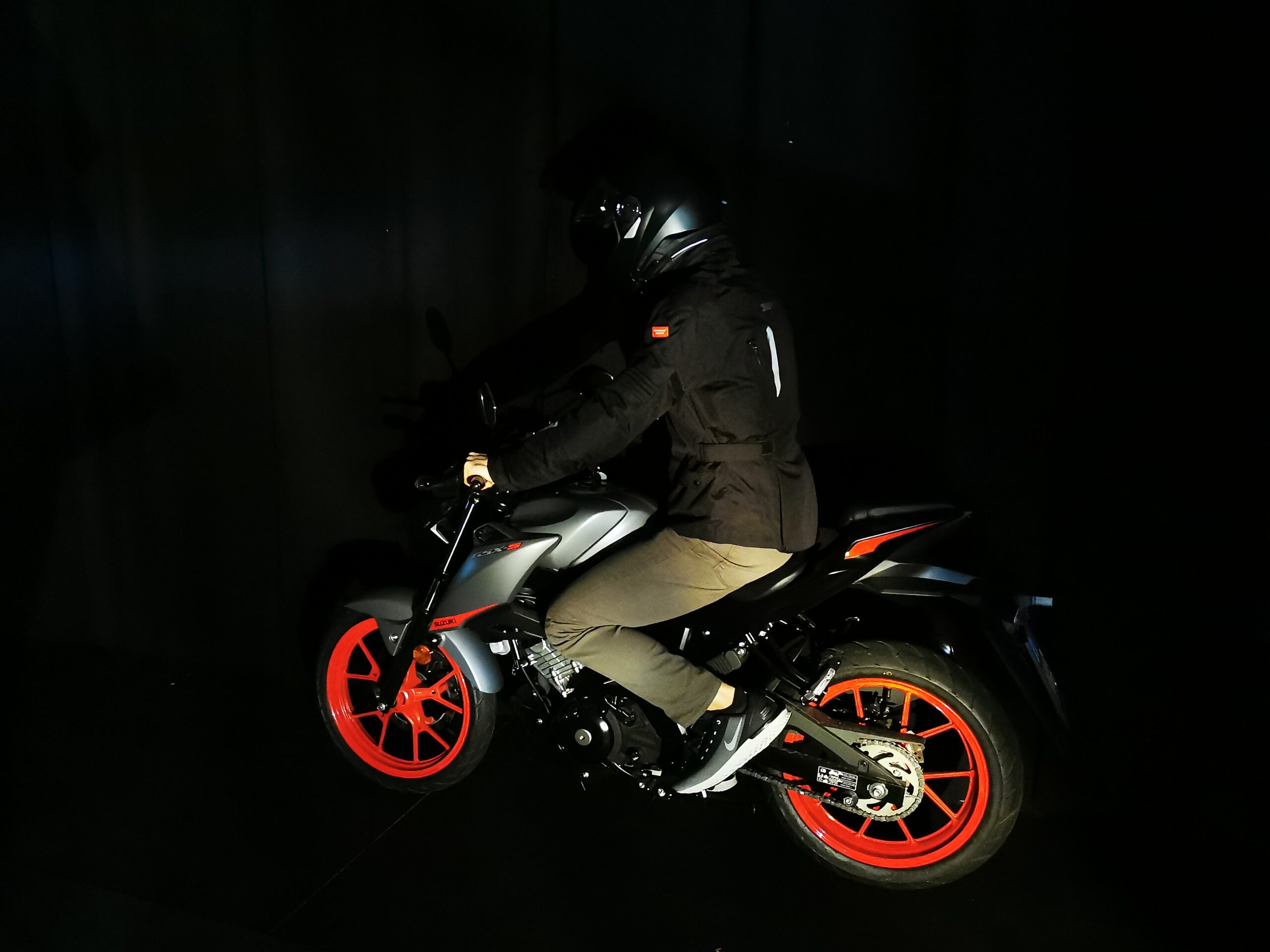
Source: Motociclismo
